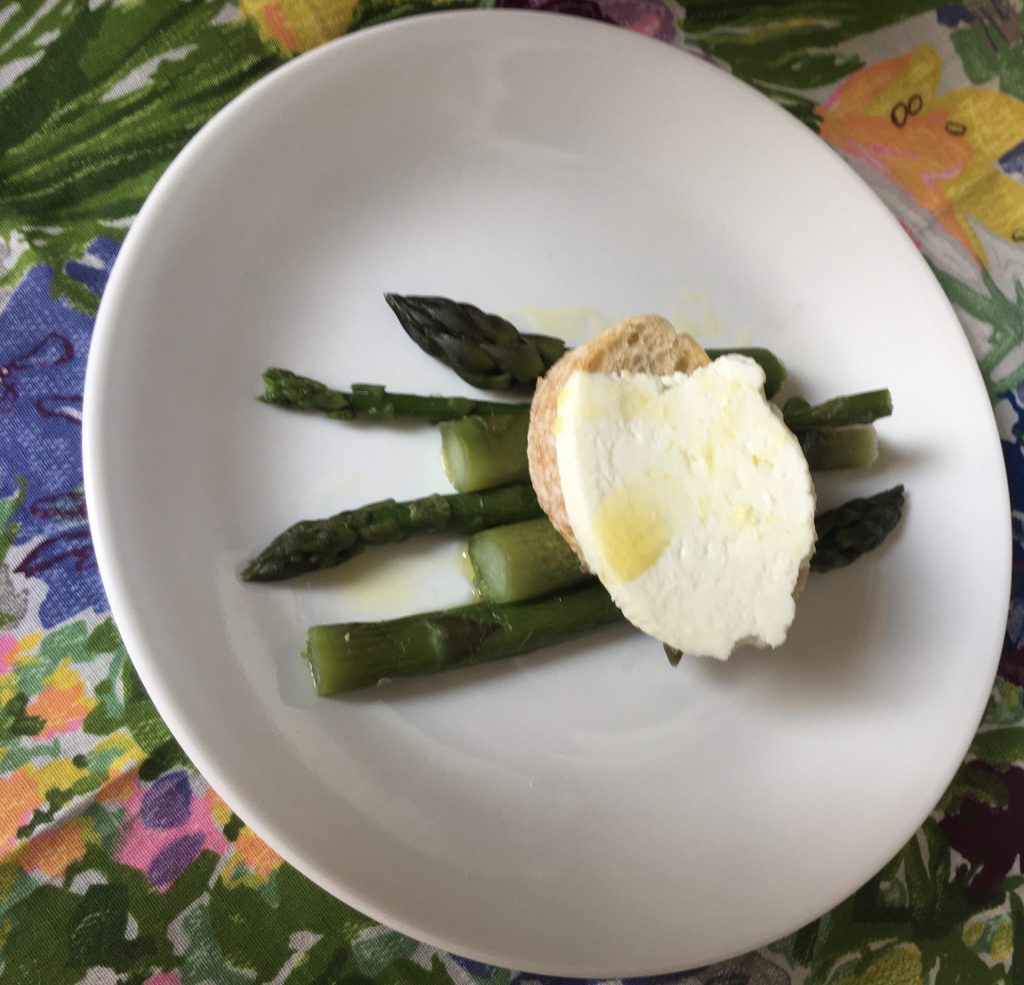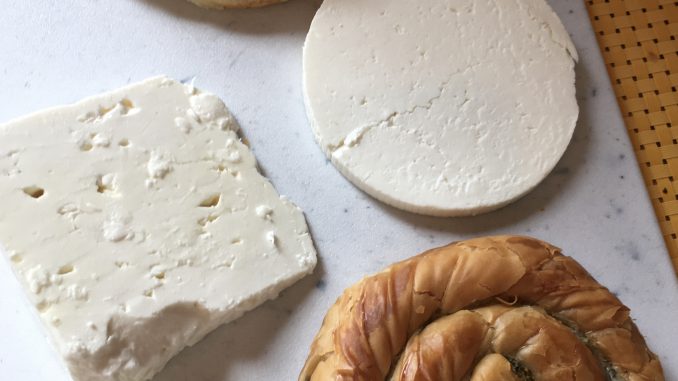Greek Cheese: It’s Not Just Feta
December 1, 2021 | 6 min to read
When people think of Greek cheese, they often think of feta, but Greece's cheese heritage is ancient and diverse, dating back before the 8th Century B.C. Cheesemaking spread from Sumeria and was linked to religious rituals. After the Mycenaean civilization's collapse, Greek cheese culture flourished again, with fresh and aged varieties, including earlier forms of feta. Authentic Greek feta, typically made from sheep and goat milk, boasts a complex flavor due to local vegetation, reflecting Greece's rich culinary tradition.

Say “Greek cheese” and most people think feta. But the cheese heritage of Greece is ancient, rich, and far more varied. Greeks had been producing and trading many fresh and aged cheese types well before the 8th Century B.C. We know this because Homer wrote about it. How much earlier were the Greeks making cheese? Archeology tells us that cheesemaking spread through trade and religion from Sumeria sometime after the 4th Millennium B.C. Cheese served as ritualistic offerings to Mesopotamian deities that would later appear in the Greek pantheon. The god Aristaious, according to legend, taught humans the art of cheesemaking, and the cult of Asklepios performed healing rituals involving milk coagulation, an essential step in making cheese.
With the collapse of the Bronze age Mycenaean civilization, around 1200 B.C., Greece fell into a dark age lasting several centuries. Cheesemaking then spread with the Greek diaspora to Anatolia, Cyprus and other points around the Aegean, Ionian and Mediterranean seas. Greece recovered its former glory and, by Homer’s time, plant (fig) and animal rennet were used to produce fresh cheese prototypes of feta, and cave-aged hard cheeses. Preservation of cheeses in brine, olive oil and by aging made it possible to ship products renown for quality from the colonies of Magna Grecia. Greek mastery of the seas spurred on prosperity as an exploding mainland population increasingly demanded quality goods.
Greek cheeses have had diverse uses for millennia. They continue to be central ingredients in sweet and savory dishes, pies and pastries. Hard cheeses are grated over other foods, while softer cheeses are crumbled over seafood, pasta and vegetable dishes. Cheese pies with layered, flaky dough (plakounta or plakous) go back to temple offerings, so phyllo, too, has ancient origins. Think about that connection to antiquity the next time you order a spanakopita!
Let’s set the record straight about feta. Domestic “feta” is usually made from cow’s milk. Cheese is rarely made from cow’s milk in Greece. Much of the land is unsuitable for pastoral grazing. Instead, the rocky terrain favors sheep and goats that clamber about, chowing down on the outcroppings of wild flowers, rogue grasses and brush. The local vegetation upon which the animals graze results in varied aroma and flavor notes. So authentic feta can be more complex than that mushy salt bomb on your salad.

Back to Its Roots
Although similar white, brined cheeses have been made in the Balkans and the Middle East for centuries, the European Union decreed that to qualify as feta, the cheese must be made in Greece. The ratios of sheep and goat milks can vary within limits, but the same basic recipe must be followed, regardless of whether it’s made in a home kitchen, small farm or industrial setting. Feta, originally a sheep cheese, can contain up to 30% goat milk. A 70% sheep to 30% goat formulation seems the most popular. But some cheesemakers create an all sheep product while others offer an all “goat feta” with a qualifier on the label. Feta is soft, and you might mistake it as fresh cheese, but that isn’t exactly true. Once immersed in brine, the feta is left to cure from one to several months.
The Cheese
Whereas many sheep cheeses from Spain and the Pyrenees can break down oily, the Greek remains well integrated and buttery. All the cheeses I sampled finished exceptionally well on a neutral note with no sharp or unpleasant aftertaste.
Feta
Some commentators note herbal, even white wine aromas. The more goat milk in the formula, the tangier the taste. I sampled fetas by Dodani and Arahova brands, both with 70/30 sheep vs. goat. For those who find the 70/30 too sharp or tangy, try an all sheep version. The 70/30 Feta by Dodoni had a light aroma, the flavor was refined, smooth, not sharp. The 70/30 by Arahova presented a more complex aroma, richer flavor, with tangy hints of buttermilk and yogurt. Unsurprisingly, both brands were salty. How salty? 303mg of sodium per 30 gram serving. For a soft white cheese with less sodium, try Manouri, a feta by-product that contains approximately 1/3 less sodium.
Manouri (brand: Hotos)
Delicate and elegant. This is a fresh whey cheese, smoother and creamier than feta, used in sweet and savory dishes, including spanakopita and phyllo pastries drizzled with honey
Aroma: mild, fresh, sweet grass
Flavor: mildly saline, a whisper of sheep, nothing sharp or tangy
Texture: tiny minced curds, more buttery than creamy
Finish: refreshing
Graviera DOC (Mendiodakis)
A semi-hard cheese made in Naxos and Crete (Kriti) aged three to five months. On Crete, made from ewe’s milk, sometimes goat. In Naxos, cow’s milk with ewe or goat. An all-around table cheese and an ingredient in pastries. Give it and all the semi-hard cheeses 30 minutes at room temperature before serving.
Aroma: sweet sheep butter
Flavor: sharp start, then sweet sheep with a tiny tang midway, not as salty as a Pecorino, nutty
Texture: similar to Gruyère, smooth then crumble turns dry with mild astringency
Finish: dry, astringency on tongue fades, leaves a whisper of pine nut
Kaseri/Kasseri DOC (Orino)
A semi-hard cheese made in Thessalia, Mitilini Island and Xanthis, aged 12 weeks. One of the most ancient cheeses.
It’s approximately 80% ewe’s, 20% goat milks, used as table cheese and for melting.
Aroma: mild, floral and herbal lurk under butter
Flavor: full bodied, sheepy-butter taste, yields to mild tang, well managed salinity
Texture: similar to a soft, springy cheddar, melts in the mouth, a touch of dryness
Finish: pleasing, slightly oily, bit of tang caresses the sides of the tongue and hard palate, perhaps least salty of the aged cheeses
Kefalotyri DOC/ Livadi
A hard cheese known since the Byzantine era, made from the whole milk of sheep or goats or both. Aged three to four months.
Aroma: woody, subdued butter notes
Flavor: salty and tangy, a whisper of goat although sheep dominates
Texture: firm, gummy, chewy, not melty
Finish: salty, particles remain firm, sticking to teeth, a long neutral finish
Kefalograviera Metsovou (Vlaha)
Aroma: buttery sheep
Flavor: first hit is salt, then fades to gummy butter, nutty midway
Texture: firm but gummy like the Kefalotyri
Finish: well integrated salt and toasted almond
Smoked Metsovou (Vlaha)
Smoked cheeses are rare outside Greece but Titan has them.
Aroma: strong wood smoke
Flavor: smoky
Texture: firmer than smoked mozzarella, pasty
Finish: forest fire, definitely an acquired taste
Other Well-Known Cheeses
Myzithra
An ancient ancestor of all whey cheeses. There are two types, fresh and unsalted, and aged.
Galotiri DOC
Another ancient fresh cheese often homemade from ewe’s milk. Aged from only a few days up to a few months.
Anthotyros DOC
A whey cheese (ewe, goat or both) with the addition of milk and cream, made in a fresh, soft form, for use in sweet and savory pastries. Can be aged up to 12 months as a hard cheese for grating. DB
5 of 8 article in DeliBusiness Dec/Jan 2021

